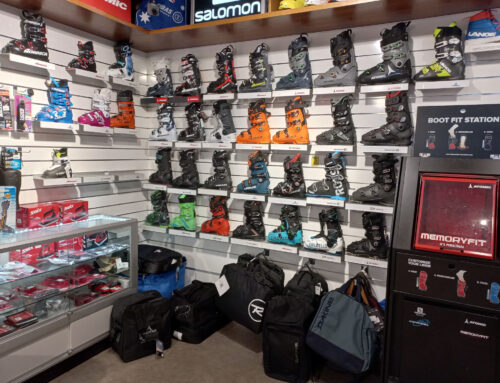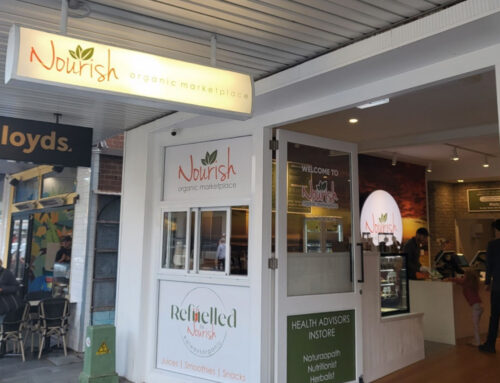Retailers with physical stores must have a web site of some kind to remain relevant, and ideally it will be an e-commerce site with your catalogue of products on display. Without a web presence you run the risk of potential customers heading elsewhere because they simply don’t know what you sell, or whether you have what they need.
In this article we describe what POS and e-commerce integration is, why you need it, and how to go about making it happen in your business.
From talking to many retailers across many different niches we have found many that operate their website as a completely separate computer system. There is no link between their in-store Point of Sale (retail management system, inventory, loyalty, reporting, etc which I’ll refer to as POS for simplicity) to their online catalogue. This is actively working against their goals of streamlining their business and trying to spend less time at work! The kinds of challenges they face every day are:
- Whenever a new product arrives in store it has to be entered twice: once in to the POS system, and once online. That opens the door up for errors in descriptions and pricing.
- Every time stock availability changes it has to be updated in two systems. If they get it wrong, or forget, they run the risk of selling something online. In doing so they get a customer’s hopes up only to tell them they can’t supply. This is not a great way to build trust and loyalty in a highly competitive market!
- Whenever a customer places an order online you need to re-enter it in your POS. Each time, eroding profit from the sale with the time spent doing this.
What we have observed is that it simply gets too hard for retailers to get their website working in their favour. They end up facing some undesirable outcomes:
- Prices and availability online don’t reflect what is in store. The online store can no longer be trusted.
- New products arrive in store but never make it online. Customers doing research online are simply going to pass over you if they can’t find what they want.
- Orders are not re-entered in the POS system and in-store inventory doesn’t reflect reality. It becomes difficult, if not impossible, to run a single sales report that explains what is happening in the business.
The key to solving all of these issues is integration.
What is integration?

Simply put, integration is connecting your POS and e-commerce system together. A software link is created between them to share data. You don’t need to be a programmer or technical wizard to do this. All modern POS systems should have at least one integration option and your POS provider will be able to advise you on what’s possible.
Integration considerations
Sometimes a POS provider will say “we integrate” but that might not mean everything is streamlined. Some of the factors you’ll want to consider are:
1-way and 2-way integration
1-way means data is shared one way. For example, product prices are transferred from your in-store system to your web site.
2-way means data transfers both ways. Product data is sent up, and customer orders are pulled down.
2-way integration is the way to go if you want to improve efficiency and reduce errors.
Batched vs Real-time updates
Batched updates describes when data is transferred between POS and e-commerce at agreed intervals. This might happen once a week, or once a day. We would consider hourly updates to be considered batched. It’s ok to have data updates delayed for an hour but it still leaves the door open for inconsistencies and over-selling online if a product is running out the doors in-store.
Real-time updates describes when data is transferred as it updates. As soon as a product is added in store, it is sent up to your web site and appears within seconds. This is the preferred integration model because it means your website is always up to date, all day, every day.
We sometimes hear retailers say that batched updates are fine because products don’t sell out so fast in store. Perhaps… but there is a hidden cost to batched updates they are not considering. As you create or update products in-store you often want to head straight to the web site and make sure everything looks ok, such as the photo, descriptions, and pricing. With a batched update, even if it is just an hour later, you incur a penalty to remember to go back, and if necessary, fix. This can cost you significant time going back and forth to fix issues over many hours if something isn’t quite right. With a real-time integration you can instantly check how the product looks online before moving on to the next one. This represents huge efficiency gain and a lot less stress.
Depth of integration
By depth we mean what data is transferred and shared between systems. This is one of the most overlooked aspects when it comes to integrations, and some service providers do a poor job. Unfortunately, most retailers only find this out after they have invested a lot of time and money setting things up. So, it pays to do your research early and ask lots of questions.
Below is a list of the kinds of data that our Univex POS and e-commerce integration supports. You can use this as a checklist when asking your POS provider what data they send and receive to web sites. If anything requires manual entry online that means more time and more cost to your business, and so you want to minimise or eliminate any kind of manual data transfer.
Products:
- Product codes
- Descriptions, both short (product name) and extended (richly formatted catalogue descriptions)
- Photo
- Price
- Cost
- Unit of measure, for example “Each” or “metre” or “kilogram”
- Barcode, which is essential if you want to connect your online store to Google Shopping Ads or other product comparison sites
- Stock level and availability, such as how low can on hand stock get before products are unavailable online
- Delivery options such as shipping and click-and-collect availability
- Dimensions such as height, width, depth and weight
- Variants such as size and colours
- Brand
- Categories or grouping information
Promotions and special pricing:
- % off
- $ off
- New price
- Buy 1 get 1 free, buy X get Y Free
And all of these for both individual products, and ranges or groups of products.
Customers:
- Name
- Email address
- Street address
- Phone number
- Email list preferences, especially if your e-commerce system has email lists built in, or it connects up to another bulk email system such as Mailchimp
When receiving information from your web site in to your POS we need to consider…
Orders:
- Customer information, with all essential data if you have a loyalty system that spans both in-store shopping and online
- Products purchased, quantities, price paid
- Discounts applicable
- Coupon codes
Also refunds should also come down in to your POS just like an order but the numbers are reversed.
Gift vouchers:
- Codes or barcodes
- Recipient information
- Gift voucher amount
When redemptions are made, the necessary communication is made to prevent the customer from redeeming twice:
- In-store redemptions send an updated balance to your web site
- Online redemptions send an updated balance to your POS
This is crucial to gift voucher success. You don’t want a customer to trick your system by redeeming a voucher twice in short succession. Yet another reason to avoid batched updates!
Customers updating their information online:
- Name
- Email address
- Street address
- Phone number
- Email list preferences
The more data that is transferred between systems, automatically, and in real time, the less manual work you need to do. It’s a no brainer to improving organisational efficiency! Your online store should be a natural extension to your physical store.
Think of your website like another POS terminal, and a self-serve one at that. Because that is exactly what it is: a selling machine that your customers should be operating, not staff.
How to get started
We suggest you call your current POS provider and simply ask what options are available. Phone is best because you can ask questions and get to a solution quicker, rather than emailing back and forth over many days or weeks. If your POS provider doesn’t provide phone support, when you need it (not when convenient to them), it might be time to consider upgrading your POS.
You want to find out what e-commerce systems they integrate with. Here at Univex, we strongly recommend BigCommerce for Australia and New Zealand retailers because it has a lot more flexibility than others, plus integrations to local shipping and payment providers. It also connects to Facebook and Instagram to open up more sales channels, at no extra charge! Behind the scenes BigCommerce also has very extensive support for integrations (called their API) which means more data can be sent to the web site and less manual work required.
Shopify is also popular and good enough for many small retailers. Both BigCommerce and Shopify take one more headache out of e-commerce which is hosting. You pay a low monthly fee and they do all of the software and security updates for you.
If you get offered Magento just be aware it is targeted more towards larger retailers that have complexity or unique requirements. It can get expensive. WooCommerce is popular but may not work so smoothly once you get beyond a couple of hundred products.
Whatever you choose, make sure you understand the integration level: 1-way or 2-way, real time or batched, and what data is shared). Be sure to ask your provider what data needs to be updated manually so you can take that in to account for your total cost of operation.
Be sure to get 100% clarity on the costs involved:
- Costs that your POS provider may charge you for setup of the integration
- Costs that your POS provider may charge you for ongoing maintenance of the integration
- Costs the e-commerce provider may charge you for their software purchase or setup
- Costs the e-commerce provider may charge you for ongoing hosting and maintenance
- Costs for building the site itself and who will be doing the job
Be a little wary of POS providers that won’t offer to build the website themselves, or won’t recommend a trusted party that will. Integrations have many technical and programming nuances. You don’t want to get stuck in the middle of multiple vendors blaming each other for why things are not working smoothly.

Testing
Call us pessimists, but when we deliver solutions to our customers, we never assume things are working correctly out of the box! Always inspect what you expect. If your provider isn’t running these tests then you will need to do them yourself:
- Add a product at POS and time how soon it appears online, and that it has all the information online in that you expect
- Updating a price in store is reflected online
- Putting a product on sale in store is reflected online
- Selling out of a product in-store and checking that availability online changes immediately
- Putting an order online and checking it appears on POS
- …and appears on sales reports with the correct selling price, cost, and margin or gross profit
- Selling a gift voucher online arrives at POS and can be scanned or located easily
- Redeeming a gift voucher at the POS is immediately taken off the website so that the customer cannot double-redeem it
- Refunding an order online also comes down to POS and your stock level goes up because the product has been returned
Whilst it is easy to blame your POS or e-commerce system if something doesn’t work, it is ultimately your problem to fix. You are better off inspecting things early after going live before your customer starts reporting issues or write bad reviews online.
Wrap up
We’ve covered a lot here with regards to integrating in-store retail management systems (POS systems) with online stores. If you haven’t done it before it seems a bit daunting. But if you ask lots of questions to your POS provider you will lower the risk of something going wrong or missing something important.
The crucial things you want to make sure of are:
- The integration is 2-way, and in real-time
- The integration is comprehensive and eliminates as much manual data entry as possible
- You understand all the costs to get set up, and ongoing, including time needed for any manual data entry online
If you get these right, you can look forward to selling online with confidence and streamlining your retail business. You will have less headaches and can focus on the things that matter.






